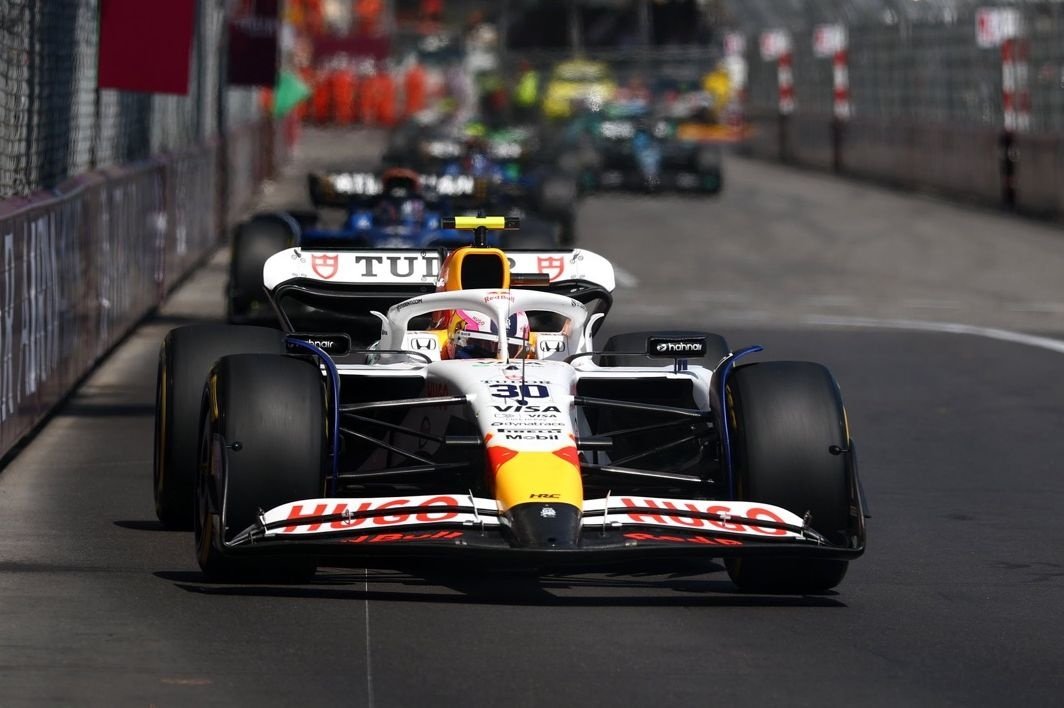The Intriguing Strategy of the Monaco Grand Prix: A Deep Dive into Tire Management and Team Tactics
The Monaco Grand Prix, a key event in the Formula 1 calendar, often brings along its fair share of strategic complexities. One of the more fascinating aspects of this year’s race was how teams planned their second tire stops without the usual aid of a safety car. This element of the race turned into a tactical chess match, particularly among the midfield teams, as they sought to gain advantage on the tight and twisty streets of Monte Carlo.
Racing Bulls took an innovative approach that caught many by surprise. They decided to use Liam Lawson to create a substantial gap that would allow Isack Hadjar to make his necessary pit stops without losing valuable position on the track. This strategy was not without its risks, as Lawson was at risk of being left in a vulnerable position during his own pit stops. Nonetheless, the Italian squad’s tactics quickly became the talk of the paddock, inspiring other teams to consider similar strategies throughout the race.
From the onset, Lawson was focused on extending the gap between him and Hadjar. By the second lap, he found himself over eight seconds behind Hadjar as he cautiously navigated the initial laps during an early virtual safety car period. This strategic slowdown was also mirrored by Lewis Hamilton of Ferrari, who was attempting to create space for Charles Leclerc to pit effectively.
Once the virtual safety car period concluded, Hamilton no longer needed to slow down the field, but Lawson continued his efforts to stretch the gap. While Hadjar was clocking lap times in the range of 1 minute 18 to 1 minute 19 seconds, Lawson was intentionally pacing himself, often recording laps in the 1 minute 20 to 1 minute 21 seconds range. This deliberate pace allowed the gap in the midfield to widen, creating the necessary conditions for Hadjar’s effective pit strategy.
A crucial 19-second pit stop window was anticipated, and by the time Hadjar made his first pit stop, Lawson had successfully expanded the gap beyond that margin. After Hadjar’s stop at the end of lap 14, he had ample time to rejoin the race ahead of his teammate, thanks to the gap Lawson had created.
Post his initial stop, Lawson slowed even further, running over four seconds per lap slower to set up another pit window for Hadjar. This tactic proved fruitful as Hadjar completed his second stop at the end of lap 19, putting him in a strong position.
As the race unfolded, however, Lawson found himself in a precarious situation. By lap 20, he was barely a second ahead of Alex Albon, with a train of cars lining up behind him. Both Albon and Carlos Sainz, who had yet to pit, were poised to make a move without risking dropping to the back of the field, and the Mercedes drivers were also in a similar situation.
Racing Bulls had effectively baited the cars behind them into a similar pit stop strategy. On lap 24, Williams opted to have Carlos Sainz create a gap for Albon to utilize, and Sainz continued to hold up the pack for the next several laps to give his teammate a chance to pit.
Seizing the opportunity, Lawson established a two-second advantage over Albon by the end of lap 30, allowing him to make his first pit stop. Understanding that Sainz would now face the same challenges he had endured in the opening laps, Lawson remained composed as he executed his second tire change simultaneously with Albon on lap 40.
The ripple effects of these tactics were significant. Sainz and Albon effectively swapped places to ensure both drivers could complete their required stops, while Mercedes employed Andrea Kimi Antonelli to facilitate a similar strategy for George Russell. The race strategy turned into a game of patience and timing, with each team trying to outmaneuver the others.
Albon’s efforts to create a gap for Sainz were nearly thwarted when Russell bypassed the Nouvelle Chicane to overtake him, deciding that the penalty for such a move was worth the risk of being slowed down. However, Sainz’s anxiety about falling out of the top 10 was alleviated when Russell received a drive-through penalty for his rule violation.
While the hold-up strategies had minimal impact on the race leaders, they significantly shaped the dynamics of the midfield battle and the overall race experience. The procession of cars behind Lawson and Hadjar illustrated how tactical maneuvers could dictate the race flow, even if they didn’t directly influence the front-runners.
In the wake of this year’s race, it became clear that Formula 1 may need to reconsider its approach to pit stop strategies and the potential consequences of such tactics. If similar rules are introduced in future seasons, especially for the 2026 season, the governing body will likely need to find ways to minimize the impact of these strategic plays.
The Monaco Grand Prix remains a captivating event, characterized by its unique blend of glamour and high-stakes racing. The strategic intricacies observed in this year’s race highlighted the lengths to which teams are willing to go to gain a competitive edge. As the sport continues to evolve, the lessons learned from this race will undoubtedly influence future strategies and pit stop management.
In conclusion, the Monaco Grand Prix showcased the art of strategy in Formula 1, where tire management and tactical decisions can make all the difference. Teams like Racing Bulls and their innovative use of drivers illustrate how clever planning can lead to significant advantages on the track. As the world of motorsport progresses, fans can anticipate more thrilling races filled with strategic depth and excitement.
